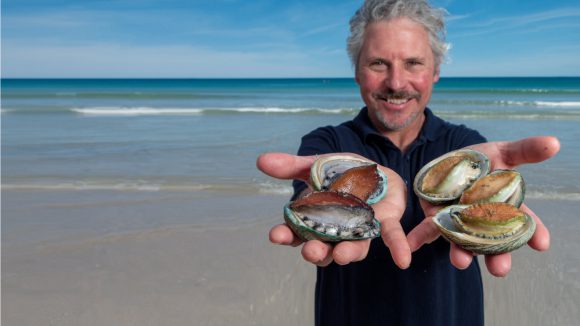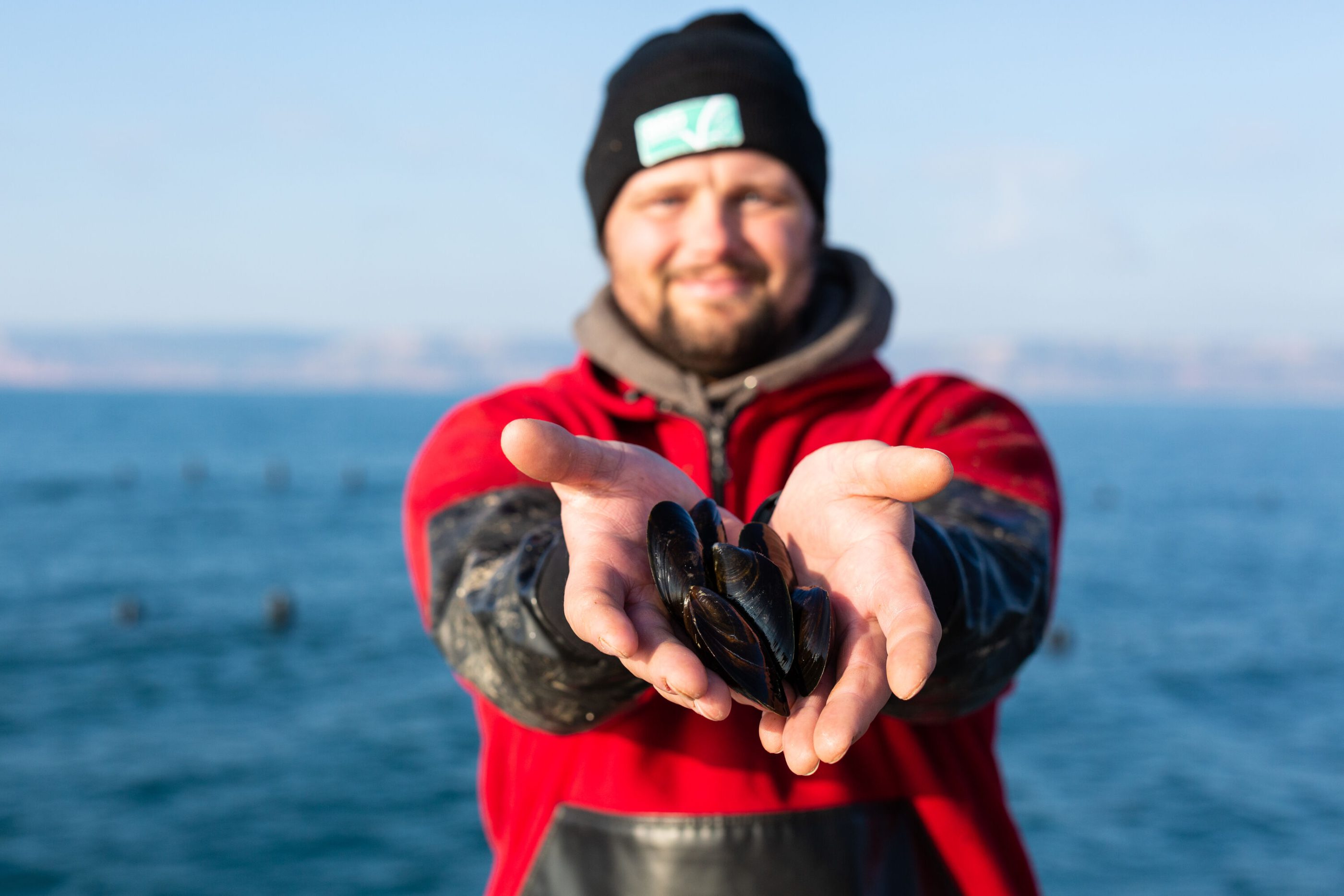
Learn about abalone
Abalone, with their rich, flavourful meat, are among the world’s most highly prized and most expensive seafood delicacies, and an opportunity to try one should never be passed up!
Abalone are a type of sea snail, a gastropod mollusc, that grows in coastal seawater. Members of the Haliotidae family, they range in size from 4 to 10 inches (10 to 25 cm). These marine creatures have a single shell on top with a large foot underneath, which is used for moving and eating. The shell is flat and spiral-shaped, with several small holes around its perimeter, and it is lined with mother of pearl, which is sought after for button, trinket and jewellery making.
There are more than 100 species of abalone worldwide, around 15 species of which are grown in aquaculture.
In the wild, abalone are found all around the world, apart from the Atlantic coast of South America, the Caribbean and the East Coast of America. Most abalone are found in cold coastal waters of New Zealand, South Africa, Australia, Western North America and Japan.
The popularity of abalone as a delicacy and for its shell, has led to overfishing and near extinction, and it is now illegal to gather wild abalone in many parts of the world. A number of species, including white and black abalone, are listed as endangered. However, thanks to careful management practices and strict harvesting regulations, as well as the increasing availability of farmed abalone, wild populations are slowly making a comeback. This is also good news for creatures such as the sea otter, because abalone are one of their favourite foods.
Today, more than 95% of the world’s abalone come from aquaculture. They are bred and raised for food in saltwater pens onshore, or in suspended cages in the ocean, taking three to four years to reach market size.
Farming abalone
Abalone farming began in the late 1950s and early 1960s in Japan and China, when it became necessary due to high demand and overfishing. In recent years, growth of the abalone industry has been made possible by a number of innovations in low- cost seed production and highly efficient sea-based cage culture systems. By 2018, global aquaculture production of abalone had reached 46,400 tonnes per year.
China is the world’s largest producer and consumer of abalone, and other important producers include Taiwan, Japan and Korea, followed by Australia, Canada, Chile, France, Iceland, Ireland, Mexico, Namibia, New Zealand, South Africa, Spain, Thailand, and the United States.
Abalone farming can be labour intensive, and farmers need to ensure that the growing conditions are always optimised in terms of water quality, stocking density, temperature, salinity and feeding practices, in order to produce a quality product to compete with and replace stock from wild capture fisheries.
Choosing to farm to ASC standards helps to ensure that farms meet a number of strict requirements, from preserving the local environment, to ensuring that workers are well treated.
Feed
ASC certification requires abalone farms to adhere to strict limits to minimise use of wild fish as an ingredient in manufactured abalone feed. In addition, the standard requires farms to ensure full traceability back to a responsibly managed source, preferably certified, for both wild fish and its main food, which is algae and kelp. A growing number of farms are certifying to the joint MSC-ASC Seaweed Standard, which makes them a preferred choice for inclusion in abalone feed.
Water quality
ASC certified abalone farms are required to measure various parameters including nitrogen and sulphide levels at regular intervals, and these must remain within set limits to ensure they do not negatively affect neighbouring bodies of water.
Biodiversity
ASC certified abalone farms minimise impacts on the local ecosystems in a number of ways, such as ensuring that farms are not sited in areas with key biological or ecological functions. No harm to threatened or endangered species or the habitat on which they depend is allowed. Escapes need to be minimised, with provision made in management plans to deal swiftly with any issues.
Diseases
Abalone are susceptible to several diseases, so working to high standards of biosecurity is essential for ASC certified farms. They must also have a disease management protocol in place for health surveillance and disease response, and adhere to rigorous requirements to minimise disease outbreaks should they occur. The use of medicines before a disease is diagnosed (prophylactic use), is prohibited.
Social responsibility
ASC certification imposes strict requirements based on the core principles of the International Labour Organisation (ILO), these include prohibiting the use of child labour and forced labour. All ASC certified farms are safe and equitable working environments where employees earn a decent wage and have regulated working hours.
Cooking with abalone
Abalone must be shucked, i.e., removed from the shell, before eating. All of the meat is edible, but the guts, black edges and tougher outer skin are usually removed and discarded. They are often sold live in the shell, but are also available frozen or canned.
These creatures have a naturally sweet, salty, buttery taste, and can be eaten raw or cooked. The meats are known to be tough, so they need to be tenderised, or beaten out flat during preparation. They can also be stewed until tender.
Abalone are most commonly sliced into steaks and pan fried or grilled, like scallops, but are also highly popular raw in sashimi.
Explore More

Find delicious seafood recipes
Explore seafood recipes using your favouriote sustainable seafood species like salmon, shrimp, mussels and more and find great ideas for your next lunch or dinner.

Visit our Blog
Find out what’s behind the label, what’s going on in the world of aquaculture and how the Aquaculture Stewardship Council is updating and improving its programmes regularly.

The Aquaculture Stewardship Council
We run the world’s leading certification programme for responsibly farmed seafood. Learn about our Certification Programmes and our Impact.



